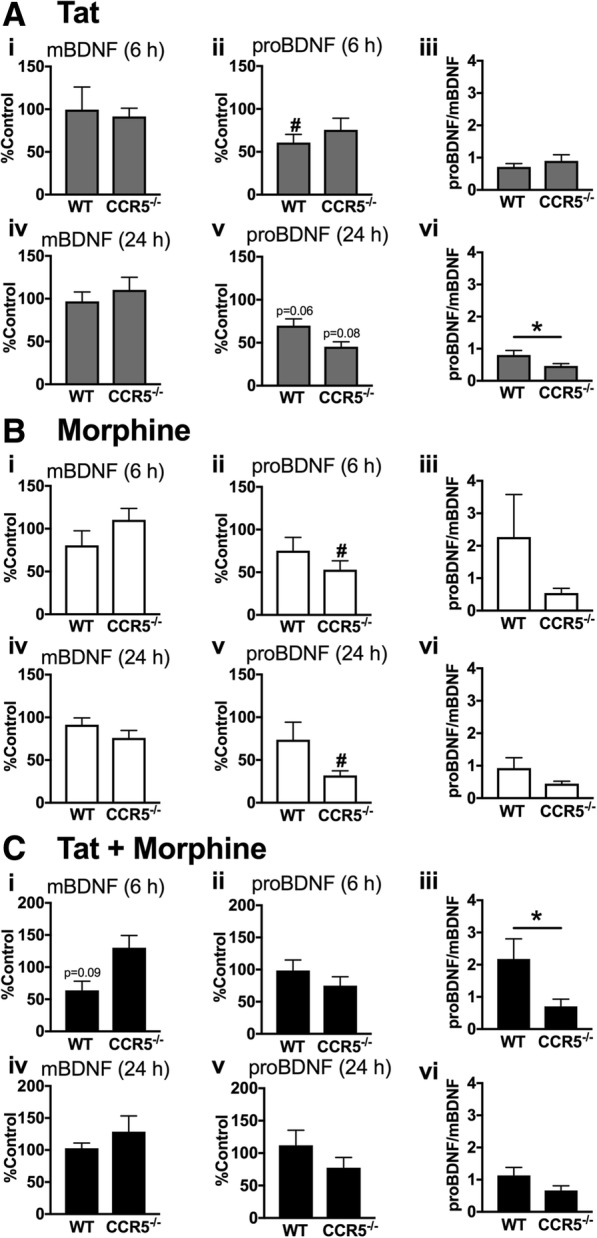Fig. 7.

Loss of glial CCR5 expression produces a shift in proBDNF/mBDNF levels. mBDNF and proBDNF levels were analyzed in conditioned media from wild-type or CCR5-deficient glia treated with Tat and/or morphine after 6 and 24 h to determine if the levels of proBDNF and mBDNF and their ratios were altered (n = 7–8). a Tat significantly reduced proBDNF in wild-type cultures compared to untreated control levels at 6 h (ii) with similar trends in both genotypes at 24 h (v). The ratio of proBDNF/mBDNF was significantly higher in wild-type cells at 24 h, suggesting reduced neuronal support (vi). b Morphine significantly decreased proBDNF in CCR5-deficient glia at both 6 and 24 h compared to control levels (ii, v). These decreases in proBDNF did not significantly alter the proBDNF/mBDNF ratios (iii, vi). c Tat + morphine treatment did not significantly alter mBDNF and proBDNF levels in glia of either genotype, although there was a strong trend to decrease mBDNF in wild-type cultures at 6 h (i). Nevertheless the treatment very significantly decreased the proBDNF/mBDNF ratio at 6 h (iii), suggesting enhanced protection with CCR5 deficiency. A slight trend towards this shift continued at 24 h (vi; p = 0.17). #p < 0.05 vs control; *p < 0.05 for all figures
